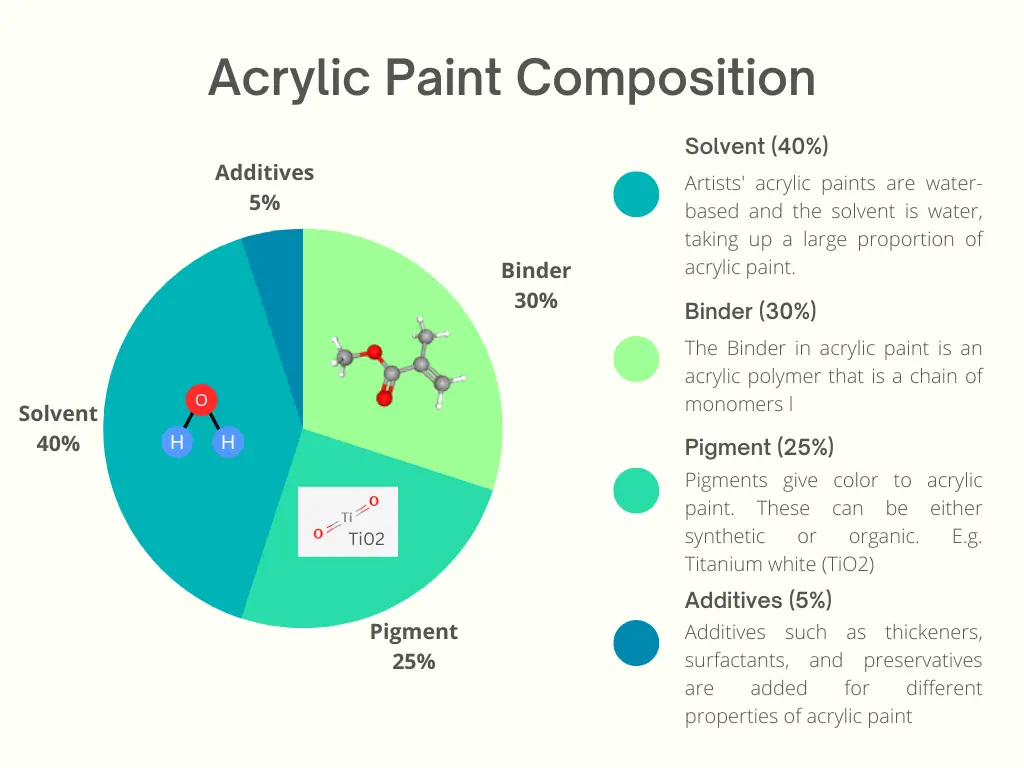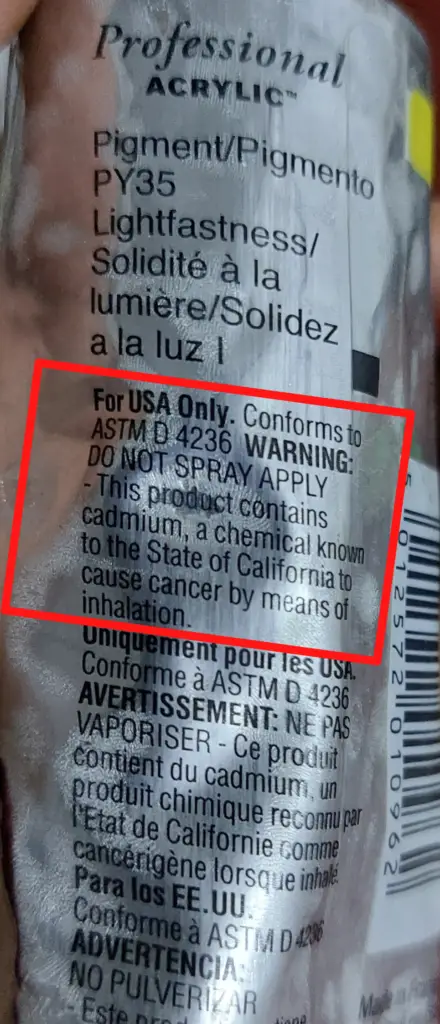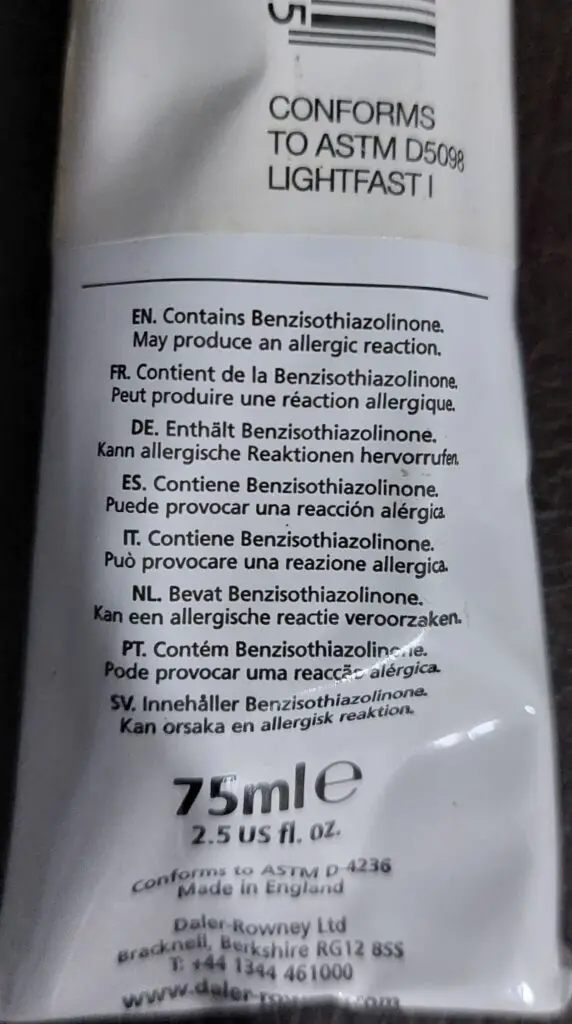Acrylic paint is such a common and versatile paint, that anyone can find. Because of its availability many have wondered whether it can be used on our skin. This is yet a common use of acrylic paint with or without knowing the safety side. Let’s see if it is safe to use acrylic paint on the skin.
In general, acrylic paint should not be used on the skin as it has not been tested for cosmetic application. Cosmetic paints have different requirements in testing, safety, and sanitation as regulated by FDA (Food and Drug Administration) while artist acrylic paints are not.
Acrylic paints have some ingredients that can be allergic or unsafe for us. This happens only in its unintended use like body painting and not in its intended use which is painting on a surface with a brush. The wrong use of acrylic paint can be detrimental to your health.
Can you paint acrylic paint on the skin?
It is not safe to apply acrylic paint on the skin as it is not been tested for such cosmetic applications. The most known health hazards in acrylic paint come from heavy metals and some additives. These can be either irritating to your skin or can be detrimental to your health. Even though the skin is not a major route of exposure to heavy metals, you still need to limit any chemical exposure.
Artists’ acrylic paints have a higher concentration of pigments. Most of the colors could contain heavy metals such as manganese (Mn), cobalt (Co), nickel (Ni), zinc (Zn), arsenic (As), cadmium (Cd), and lead (Pb).
The harm typically comes with the heavy metals in pigments. Heavy metals are added in acrylic paints, usually in artists’ acrylic paints for color development, to produce a premier class of paints, and to protect surfaces from deterioration and corrosion (source 1, source 2). Even some of the additives such as ammonia, formaldehyde, and biocides (preservatives) in acrylic paint can be allergenic on the skin.
Is acrylic paint toxic on the skin?
Acrylic paint exposure through the skin may not become toxic as skin absorption of heavy metals is very low. However, there can be situations where even a smaller amount of heavy metal exposure can be lethal. Also if the skin is damaged, it can increase the movement of heavy metals like cobalt and nickel and increase skin absorption.
The heavy metals that are considered to have the most toxicity for humans are lead (Pb), arsenic (As), chromium (Cr), mercury (Hg), and cadmium (Cd) (source, source). A study was done to assess the number of heavy metals (manganese (Mn), cobalt (Co), nickel (Ni), zinc (Zn), arsenic (As), cadmium (Cd), and lead (Pb)) in acrylic paint for children. All the acrylic paints colors used in this study were found with heavy metals ranging from 0.05 to 372.59 µg/g. Cd had a lower percentage (0.05%), whereas Zn was the most abundant metal present(68.33%) (source).
I have written a whole article about, ‘Is acrylic paint harmful? (In different routes of exposure)‘ There you will find the extent of harmfulness in different routes of exposure to acrylic paint. You can become a successful, informed artist with no adverse effects from using a chemical to create beautiful art.
The main routes of heavy metal exposure in humans are inhalation and ingestion such as through paints and foods (source). This means that skin absorption is not a major route of heavy metal exposure in humans. Even so, even a smaller about of toxic compounds entering the body through the skin can be detrimental.
The toxicity of a metal depends on aspects such as the dose of heavy metal, its exposure route (i.e. skin absorption, inhalation, ingestion), and the type of compound. In addition, individual factors such as heredity, gender, age, and dietary conditions.
Even though you are exposed to paint, all the heavy metals in the paint will not be bioavailable or may cause harm to your body due to the mild acid and base condition in the body. However, some adverse effects of chemicals may not have been discovered yet. Therefore it is always recommended to limit exposure to chemicals as possible.
What acrylic paint is made up of?
Acrylic paint is made up of pigment suspended in acrylic polymer emulsion. A polymer emulsion has acrylic polymer particles and pigments floating throughout water stabilized by surfactants. These acrylic polymer particles are smaller than the width of human hair and can only be seen through a powerful microscope.

Acrylic paint is made from acrylic polymers which are plastic. Types of acrylic polymers or acrylates used in acrylic paint are poly(methacrylate) (PMA), poly(methyl methacrylate)(PMMA), and poly(ethyl methacrylate) (PEMA).
Pigments in acrylic emulsion give color to acrylic paint. Additives are added to thicken acrylic paint, keep the paint wet in the container, and reduce the formation, and preservatives are added to keep them longer.
What pigments and additives in acrylic paint are unsafe?
Several pigments in acrylic paint have safety issues. They are listed in the Safty Data Sheet for artists’ acrylic paint. Below I will be listing down some of them. (natural, synthetic, inorganic, and organic) The outcomes show that the studied elements (Mn, Co, Ni, Zn, As, Cd, and Pb) were found in all the samples in amounts ranging from 0.05 to 372.59 µg/g. Among them, Cd had the lower percentage (0.05%), whereas Zn was the most abundant metal present, with a tremendously high amount (68.33%).
Cadmium pigment safety concerns
Cadmium is a compound that you need to be extra careful of. It is classified as a carcinogen by both OSHA (The Occupational Safety and Health Administration) and IARC (International Agency for Research on Cancer). The cadmium paints that you need to be aware of are cadmium yellow, cadmium red, cadmium orange, etc.
Those who are sensitive to metals may also develop skin irritation upon contact with cadmium pigments. As there are long-term as well as short-term adverse effects of being exposed to cadmium, you need to minimize exposure to acrylic paint containing this pigment.
Cadmium-containing paints have warnings displayed on the label as below.

The prominent black ‘X’ on an orange background is the European symbol for harmful products. It is used on acrylic paint labels to distinguish between colors that present a significant known risk from those that do not pose such risk.
You will often see a message like the one below in acrylic paint colors containing cadmium pigments. So these colors are certainly not good for body application like any other chemical.
This product contains cadmium, a chemical known to the state of California to cause cancer using inhalation. Possible risk of irreversible effects. Avoid exposure. Do not breathe or spray. – Golden Paints label of cadmium containing acrylic color
Following is a step of cadmium lemon color, which is a cool yellow color containing cadmium pigment in the Winsor & Newton brand. It also contained a similar message and I have included a snap of it below.

Manufacturers have taken every measure to make your art materials safer to use. Acrylic paint containing cadmium pigments only has them in very small amounts. Also, cadmium as a metal has a very low skin absorption as much as 0.5%. However, inhaling or ingesting cadmium metal particles can be detrimental(source). Therefore you should limit your exposure to cadmium pigments.
Furthermore, cadmium is less stable and becomes bioavailable when exposed to light and moisture. So, your paint water may contain more bioavailable cadmium pigments.
Cobalt, nickel, and chromium pigments safety concerns
According to the Centre for Disease Control and Prevention(CDC) and Occupational Safety and Health Administration (OSHA), cobalt, nickel, and chromium which are heavy metals can be carcinogenic. All these substances are contained in certain acrylic paint colors such as cobalt in cobalt blue, nickel in Nickel Azo Yellow, and chromium in Chromium Oxide Green.
All these colors containing heavy metals need to be used with care. Furthermore, One study has found that cobalt and nickel powders are readily absorbed through the damaged skin while chromium’s ability to absorb through skin is low for damaged skin(Source). This study suggests that it is necessary to prevent skin contamination by toxic compounds because they can be readily absorbed through the skin when there is even a small injury on our skin.
Note: Apart from the heavy metal pigments in acrylic paint mentioned here, different brands of acrylic paints can contain different heavy metals and other potentially harmful chemicals. Therefore, always check the label of a paint tube for its pigments. The label will also contain a warning message about certain harmful substances in the paint.
Acrylic paint additives safety concerns
Some people develop skin irritations when acrylic paint is applied to the skin. There are several additives added to acrylic paints that can cause this irritation such as ammonia, formaldehyde, and biocides (preservatives) such as Benzisothiazolinone.

Can you make acrylic paint safe for the skin?
Acrylic paint is not meant for skin application and in fact, it is not been tested for safety in skin applications. Even though acrylic paint does not contain heavy metals, it still can contain chemicals that pose unknown risks. Therefore it is best to limit your exposure to chemicals such as acrylic paint at all times.
Sometimes you may use acrylic paint as body paints as a cheaper, more convenient option. However, you should avoid using acrylic paint as body paints because it has not been evaluated for cosmetic uses. It is only recommended to use face paint or body paint with FDA approval.
When painting it is common to get acrylic paint on the skin. To me, it happens all the time. Remember to clean up the training spot on your skin immediately. You can use a wet paper towel for this. If you ever forget to do so, clean the acrylic paint stain immediately after your painting session.
How many hours can you keep acrylic paint on the skin?
There is no safe minimum hour exposure time on the skin for acrylic paint. Some people with sensitive skin can develop allergenic reactions such as skin irritations immediately after contact or after a few hours.
Chronic exposure is continuous or repeated contact with a toxic substance over a long period (months or years). This chronic exposure to acrylic paint could lead to adverse conditions such as cancer. This means even if you contact acrylic paint for a shorter period, but with a higher frequency, still there can be adverse effects.
As there is no safe exposure time for acrylic paint it is best to avoid it on the skin as much as possible. A safer exposure time has not been tested by the paint manufacturers as it is out of the intended use of acrylic paint. You can clean yourself of any acrylic paint stains as soon as possible.
You can use soap and water to clean acrylic paint on your skin. If there are any rough spots rub them with some oil like baby oil and then wash them off with soap and water. The key to getting off acrylic paint is water as it weakens the adhesion of acrylic paint to the surface.
I have written a whole article about ‘Can you put acrylic paint on your face?‘. You will find out why it is not safe, as well as the best paint to use on your face. You can also read my article,
What paint can you use on the skin?
The only paints that are safe to use on your skin are body paints, face paints, or any other paint of cosmetics that have undergone tests to ensure their safety. Always choose products that are compliant with the rules and regulations of the Food and Drug Administration (FDA).
You can also check for any violative cosmetic products that have been notified by FDA with the FDA verification portal feature. You can use this portal by typing in the name of the cosmetic product before buying them.
You will see the importance of undergoing proper quality tests and being FDA compliant from the following research conducted. There are some cosmetic face paints containing harmful chemicals in different quantities such as Pb (16.2 μg/g), As (1.8 μg/g), Cd (0.6 μg/g), Cr (23.1 μg/g), Co (4.4 μg/g), Cu (610 μg/g), Zn (10415 μg/g) and Ni (7.6 μg/g). All analyzed samples of this study contained at least four of these heavy metals(source). Furthermore, the overall carcinogenic there of these metals in the face paints was 0.01–0.96%.
Conclusion
On the bottom line, using acrylic paint on the skin is not safe and not recommended. The best option of paint to use on the skin is body paint or face paint. Even when you choose the paints for cosmetic application, check if they comply with FDA rules and regulations. Otherwise, these cosmetic paints may also contain heavy metals that are detrimental to our health.
